Palimpsest of Power – Aaron Bezzina
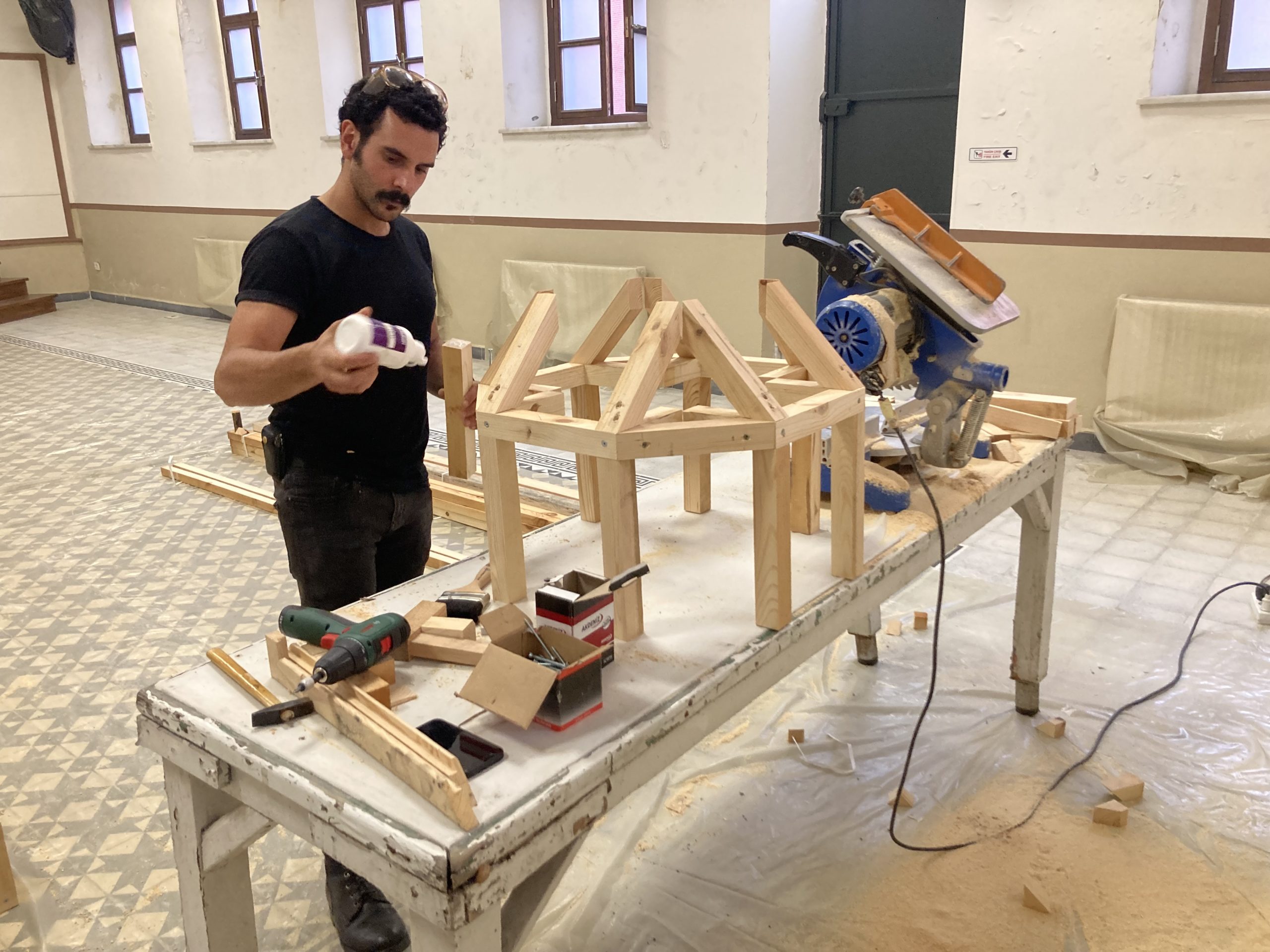
Aaron Bezzina working in his current artwork for the Mahalla Festival

Aaron Bezzina lives and works in Malta. He’s interested in structures, contraptions and mechanical objects, and his work focuses on existential questions and philosophical issues (1). He studied a Bachelor of Arts in Fine Art (2014) at the Malta’s Institute of Art and Design, and later a Master in Digital Arts at University of Malta (2016). In his latest exhibitions he has shown mainly sculptures, gadgets or installations that make use of various media like wood and metal. In 2015, Bezzina was awarded a residency by the European Investment Bank in Luxembourg. In 2016 he undertook a traineeship with the cultural association for the arts Nuova Icona in Venice, and in 2017 he was one of the artists selected in the Maltese Pavilion at the Venice Biennale.
Bezzina met Thomas and Sabine for the first time in Malta. It was in 2017, regarding Bezzina’s participation in the Malta Pavilion. He was later invited to a Maltese edition of the Mahalla Festival in 2018, and they stayed in touch since then. This year, they directly called him to participate in this year’s edition of the Mahalla Festival, happening in Istanbul. This is Bezzina’s third time in this city, and he feels pleasant about that. His participation into the Mahalla Festival in the frame of parallel events of the 17th Istanbul Biennial under the title Palimpsest of Power and his stay in Istanbul during this time is supported by the Art Council Malta.
INTERVIEW with Aaron Bezzina
By Maëla Sanmartín

Maëla Sanmartín, Diyalog Derneği Aaron Bezzina, artist of the Mahalla Festival
What artwork are you proposing for the Mahalla Festival?
My works, sculptures or installations are very dependent on the concept of the event. But most importantly, they are sensitive to space. I design the installation according to the environment it’s going to fit in. Initially, I had proposed something involving the panoptic, which is a surveillance method for prisons. But then everything turned differently. Instead of building a tower (that was my initial idea), I used the main staircase of the Greek Elementary School as a virtual tower. What I’m going to build is a staircase that is connecting three floors, around 12 metres high. In a panoptic there’s someone who is observing, but my work reverses that idea: this person who is observing is reversed using the figure of a boss, of a head. It’s about power, but in a very open and abstract way.

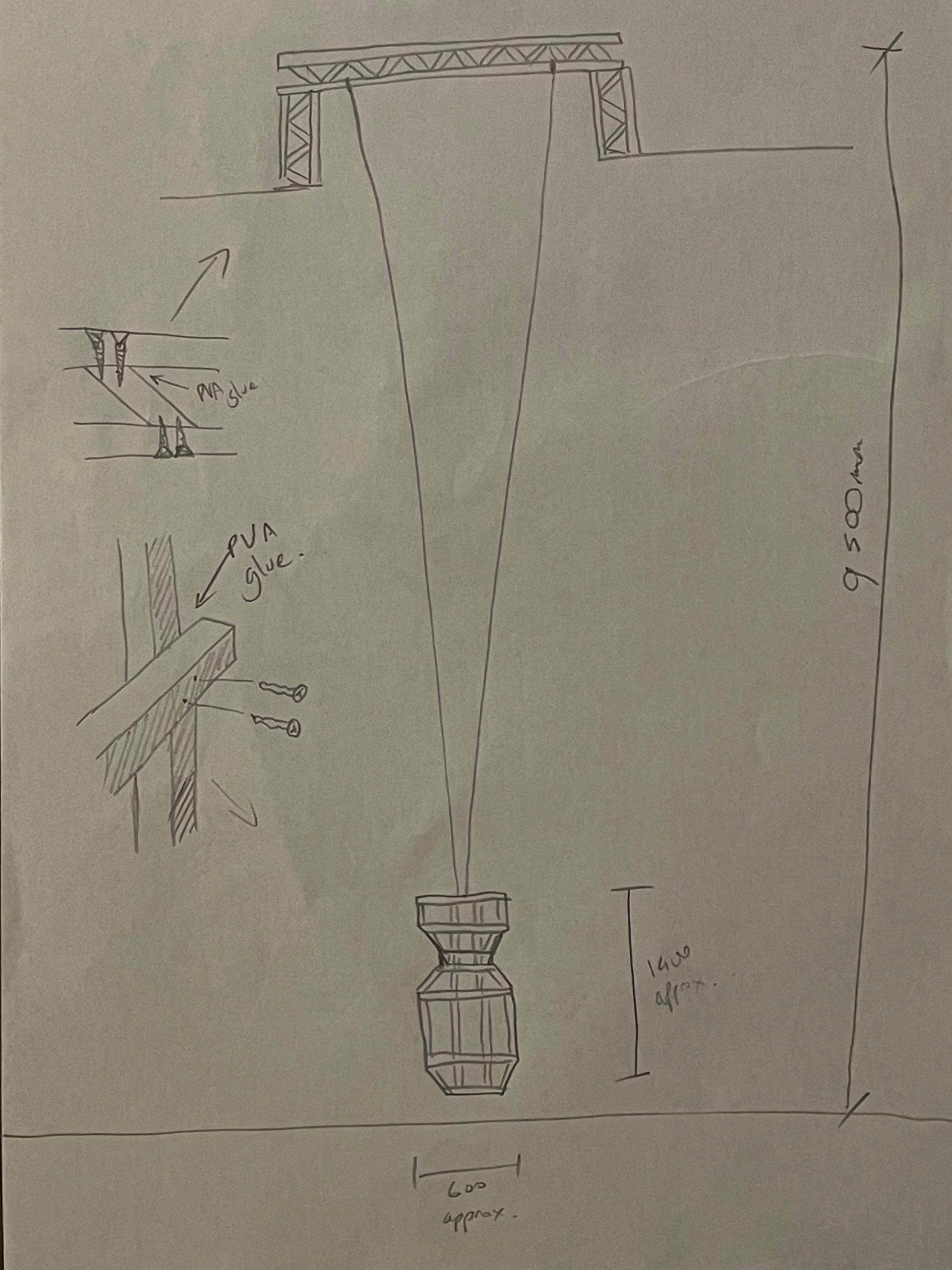
Sketches
What are your expectations about the Mahalla Festival 2022?
I like the approach that the Mahalla Festival takes. It utilises existing, maybe also abandoned buildings. That is really a fresh way to look at art and how to work with artists. The Mahalla festival is very sensitive to the community and usually the artists involved are also very sensitive to the people surrounding the artwork. It is not about trying to dominate the space and saying that you need to look at this, it’s a different approach. It’s more of a communal approach, which I find that quite interesting and both beneficial for the artist and the community. I’m looking forward to finishing the work and seeing all the works happening, and meeting the people who would be interested in seeing the works.
Maybe an artwork is never finished
In general, when do you consider that an artwork is finished?
I don’t know if an artwork is ever finished, because it always regains context. Since the viewer can change, the artwork can change in a sense. Even though physically it stays the same. But times change, so events change through changes. So yeah, maybe an artwork is never finished. We can still reinterpret Goya in today’s situation in Europe, for instance. From a physical point of view, an artwork can be completed when the artist signs it and says: “Ok. From my end, this is done”. But when it’s made public, it is never finished. It has a different narrative all the time.
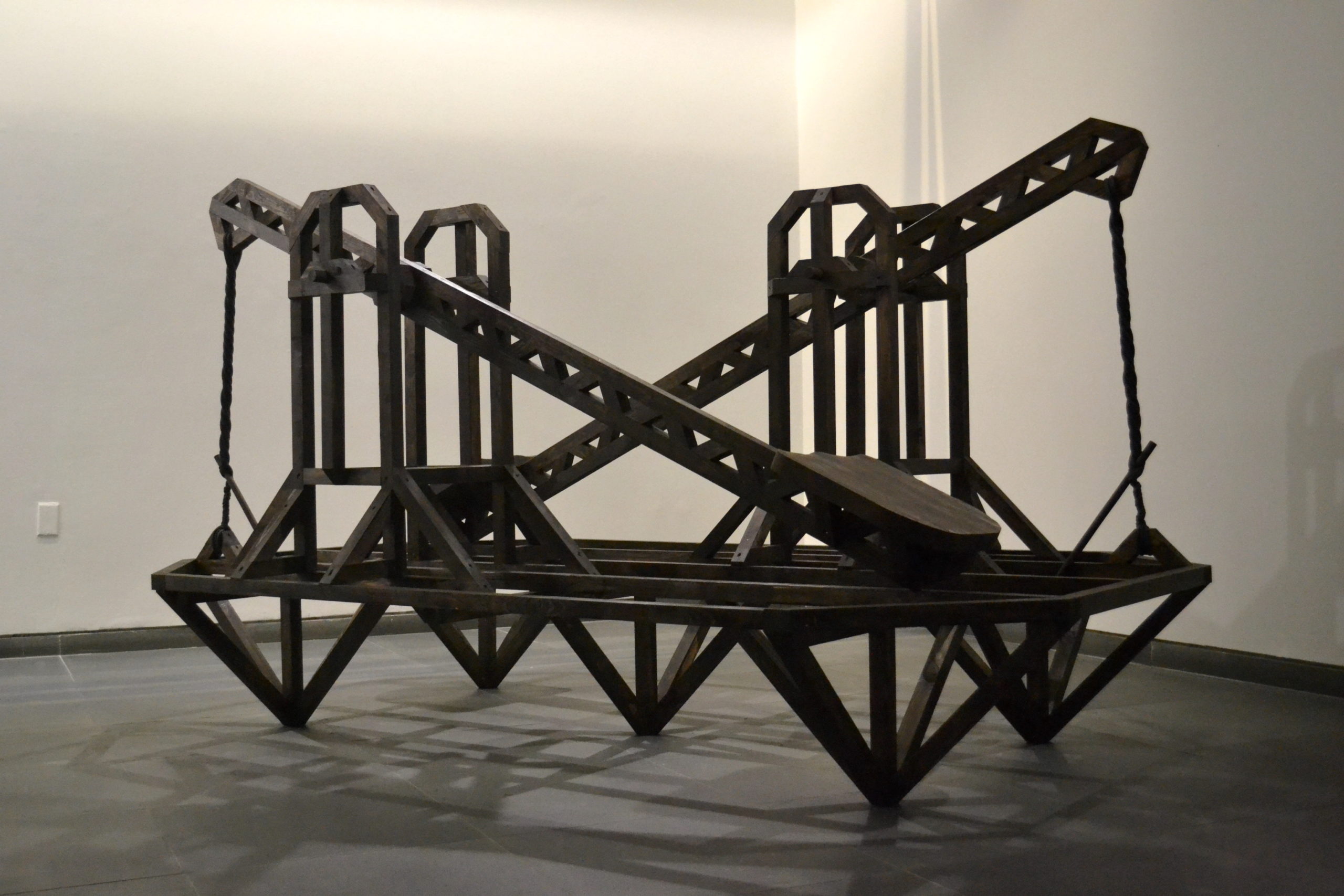
Aaron Bezzina – Double Catapult, 2021, Wood, stain-varnish, screws and rubber
How do you expect people from the public to interpret your artwork?
I’m usually more inclined to show my work in spaces where people intend to visit, and are interested in art in the first place. This time it’s going to be different, as we can get neighbours of the School and people who are just passing by. It’s not the kind of audience that is accustomed to art, or to contemporary art. And that is quite interesting. When I’ve done these kinds of projects before, I got the most interesting interpretations of the work. Some interpretations that I didn’t even conceive, and that’s why I mentioned that an artwork was never finished: because maybe people who are not accustomed to art have the freshest eyes on looking at it.
You said in another interview that your favourite artwork is the one that you’re working on at the moment. What makes the process of creation enjoyable for you?
I treat every artwork as a problem to be solved. But I have created the problem. I will have to solve it for myself, and the other components follow. When I’m doing an artwork, I am probably engulfed by the whole process, and it allows me just to focus on that, leaving everything behind and leaving other other artworks for the future, just pending until it’s their time. I try to do my best with every work, whatever it is. It could be a small drawing or a sculpture that goes to three or four floors. So it’s the notion of focus and dedication that made me say that statement.
The muse doesn’t really exist. All that exists is work
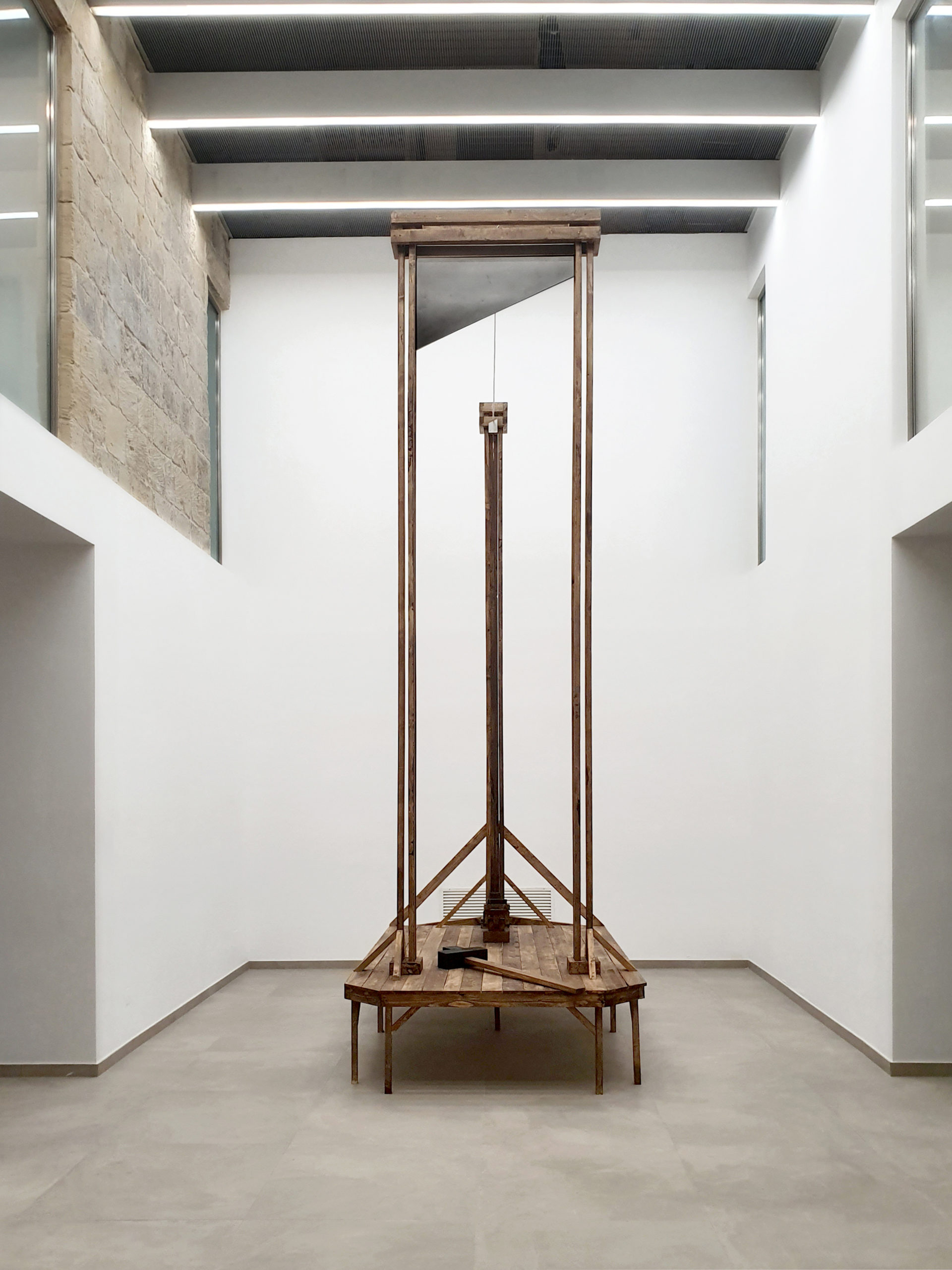
Guillotine , 2019, Wood, stain varnish, rope, stainless steel, steel, paint, screws
How is the process from finishing an artwork to starting a new one?
I think creativity is a very interesting term that is used by people who are not, in a sense, creative. I’m saying this because the muse doesn’t really exist. All that exists is work. And by work I mean sitting down and doing something. This could be just sketching or finding ideas. It’s not that I just sit and wait for an idea to hit me, but I try to fish it by maybe working or doing something mundane, like doodling around. By working you produce more work, more ideas and more energy. I don’t think artists ever stop working, if they call themselves artists.
Do you take some moments to rest? Or do you get stressed with the idea of doing absolutely nothing, like staring at the wall?
I don’t like the idea of having a holiday. Maybe staring at the wall can be part of the process sometimes. Maybe it relaxes you and gives you space for more ideas. But to waste time (in the sense of not having produced any productive thoughts) makes me feel like I’ve wasted my time (Bezzina laughs). In fact, I have a sketchbook and I try to have an idea every day. It’s a self-imposed work.
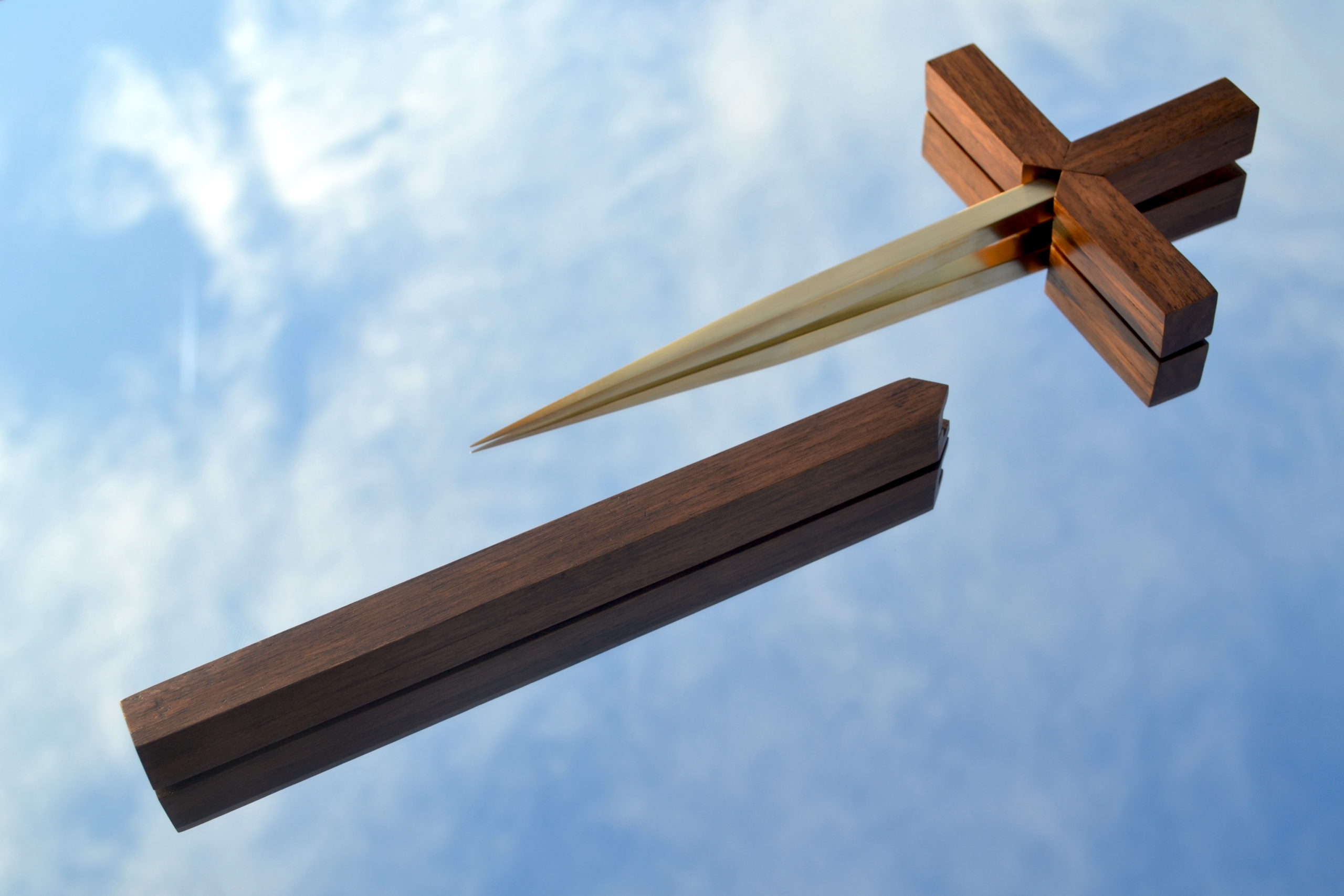
Aaron Bezzina- Cruci-dagger,2022,Brass and wood
Don’t you think that trying to be productive anytime can be a problem?
I think that my body and my brain show me when it’s time to stop. For practical reasons, I’ve learnt that if I’m building a structure and I’m using dangerous tools -like drills- and I’m tired, my body shows me that ‘hey, it’s time to stop, or you’re losing your fingers soon’. These are practical signals for me to stop, have something to eat and go to bed. And that is enough rest for me. Maybe the notion of rest or a break could also come in different forms like going out for a drink with friends, but I don’t need a whole week of a break. I’ve tried it. I’ve tried going on holidays. But after three days, when I visited all the museums in the area and wondered what I was going to do in the following days, I felt anxious. It makes me anxious (which is also kind of good).
Do you think there’s a lot of competitiveness in the art world? Do you feel pressure?
I think the pressure comes purely from deadlines and bureaucratic stuff like funds. Otherwise, nobody is really asking for an artist to be an artist. I don’t see the competition there. I know that the work that I’m doing now is better than all the works that I’ve done before, so this is a form of a competition within myself. But how would you quantify or qualify this kind of things? Which artwork is better? It’s hard for me to say: this artwork is better than that artwork. Why? What kind of criteria or taxonomy would you imply on it? Maybe competition is more within the art market, but I’m not really part of that.
Have you made a lot of sacrifices during your artistic journey?
I challenge the notion of sacrifice. Coming from a catholic country, everything has to be sacrificial. You have to sacrifice your life for your family, for education, etc. I don’t like the idea of sacrifice in the traditional way. Being an artist is initially difficult until you start to understand how you work and how the ecosystem around you works. And probably everyone knows this, because everyone discourages their children to be artists, unless they are well connected to it. Maybe this is what perpetuates it to be hard. Anyway, I think I would still do the stuff that I do: coming up with ideas and trying to produce them. I don’t think I’ve made sacrifices, because I love what I do and it has never put me in a weird situation. It’s just knowing what I’m going for. At least I know that I’m doing the thing that I love most.
Art is the craziest, most absurd invention of the human being
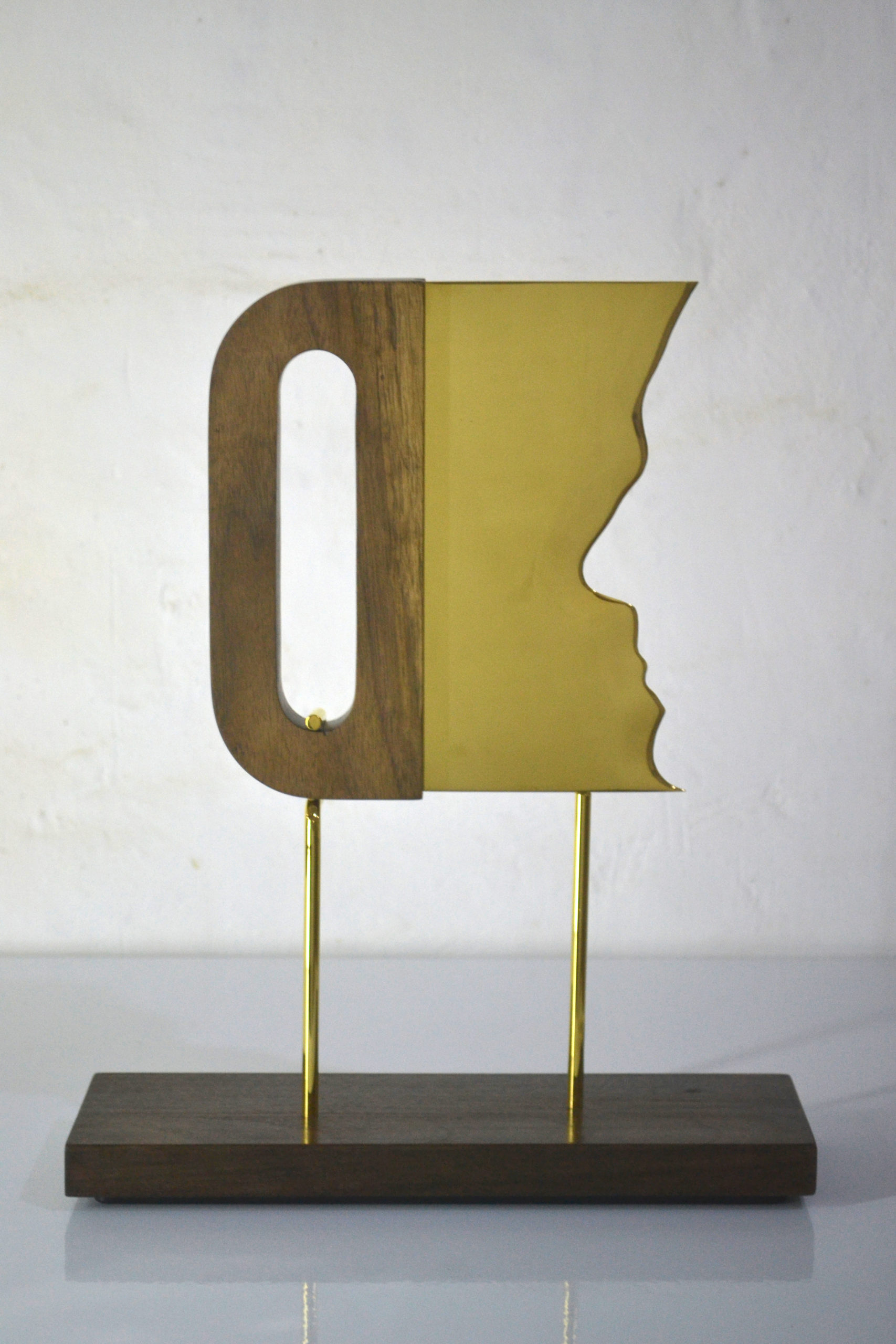
Face/Splitter (self-portrait), 2022, Gold-plated bronze and wood
Does art have a meaning for you?
I think art is the most absurd thing that human beings have created. If we put some paint on a square piece of fabric and stick it on a wall, it is art. So it is the craziest, most absurd invention. I don’t know why everyone isn’t participating in this. Even if it’s, let’s say, low quality art, it’s still art. I think that’s one of the meanings of art, that you can do whatever you want and somehow it’s justifiable, unless it’s hurting another individual. Then it’s a different area. But when it’s just a crazy fun idea, that could be art. There’s no defining meaning of art, but anything that is related to it it’s at its essence absurd.
What is the best part of working in the artfield?
I think that for the previous reason. How can you justify in the practical world to hang a structure from the middle of a staircase three stories high? There’s no way of justifying that, but that’s the idea you had. Art is the medium to make these ideas happen, but it also offers an aesthetic good side to it. It offers aesthetic pleasure, or some form of conceptual engagement. From this absurd idea comes out a lot of benefits or spaces where one can think, criticise and play.
- Aaron Bezzina (n.d.). Mahalla. Available at: http://mahalla.inenart.eu/speakers/aaron-bezzina/

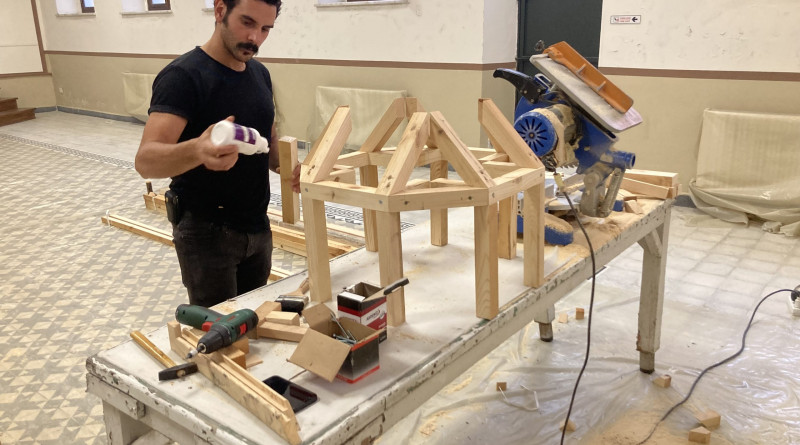
Pingback: Raphael Vella – Maltese artist, teacher and curator | InEnArt